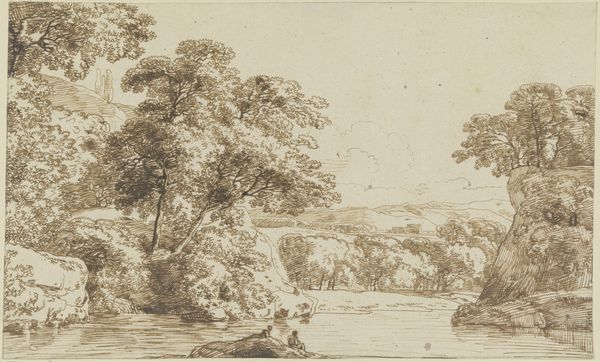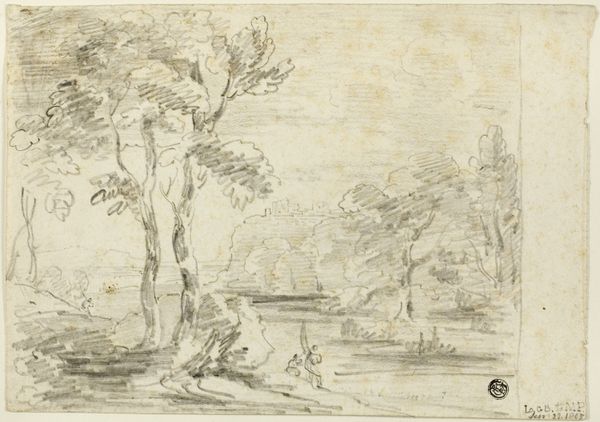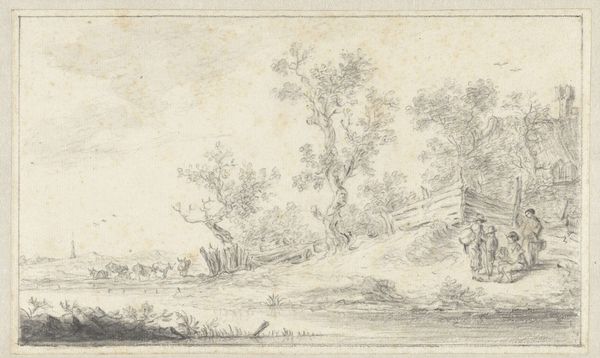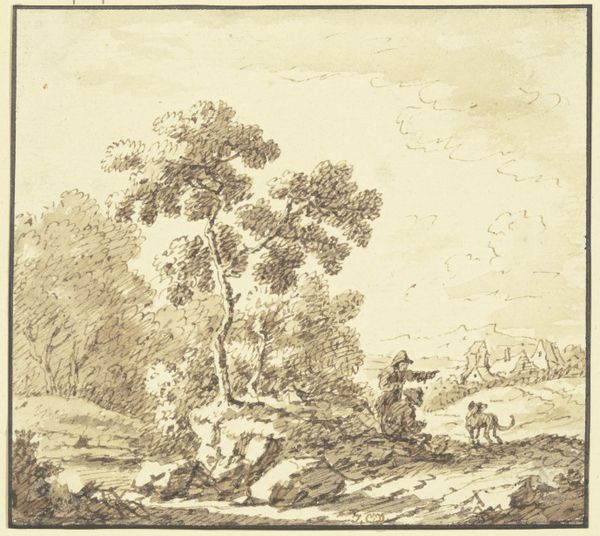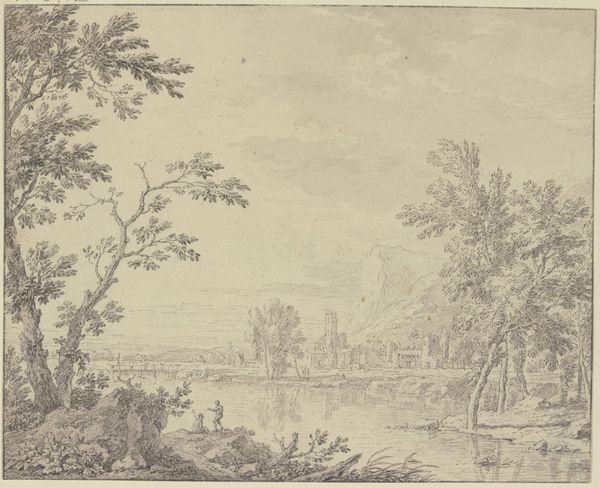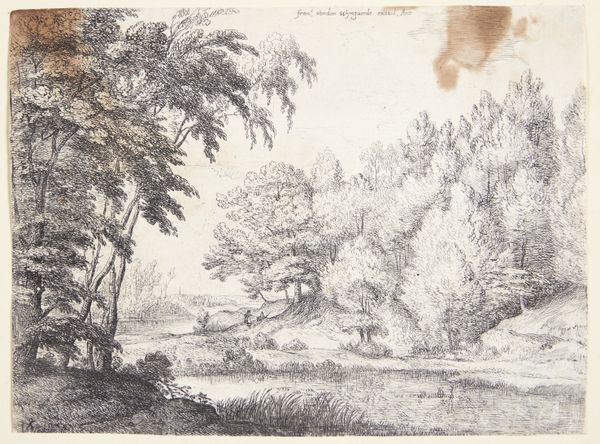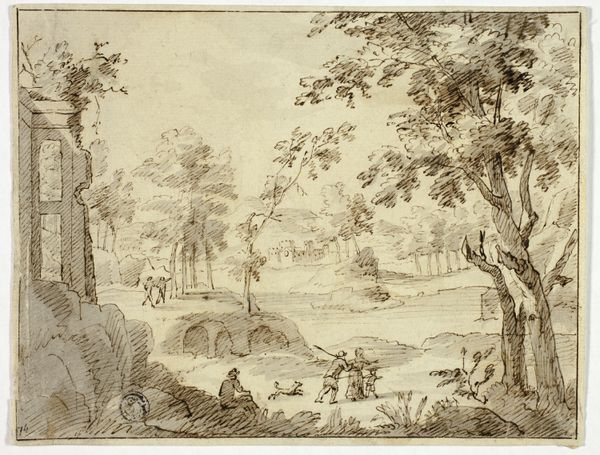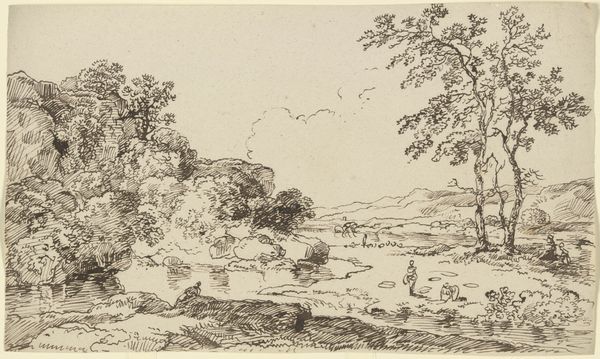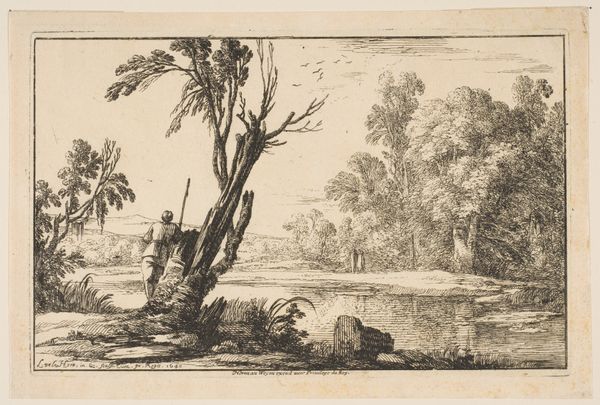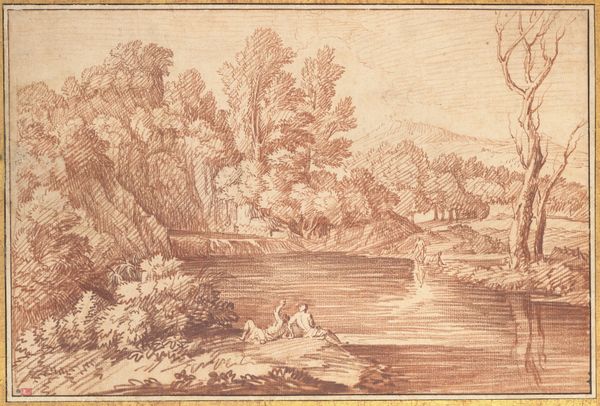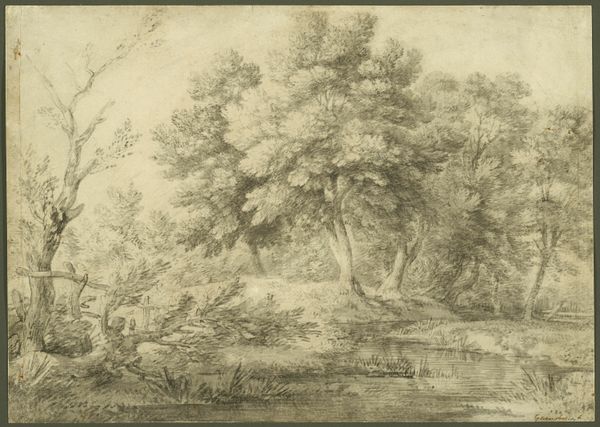
drawing, print, etching, ink
#
drawing
#
baroque
# print
#
etching
#
landscape
#
etching
#
ink
Copyright: National Gallery of Art: CC0 1.0
Curator: Here we have a print titled "Roman Landscape," attributed to Gaspard Dughet. Editor: There’s an immediate calmness about it, even with the lively etching marks that compose the scene. It’s really subtle. The trees, the water, the far-off hills...they all feel carefully rendered to evoke quiet contemplation. Curator: Indeed. Dughet was highly influential in shaping the Roman landscape tradition. His works catered to the growing interest in picturesque views and the appreciation of nature amongst the aristocracy and Grand Tourists of the time. Editor: It’s fascinating to see the material reality of that idealized landscape, though. This isn't oil paint slapped on canvas, this is a much more democratic medium. An etching—prints meant these images were easily reproducible, moving across social strata. Think about the labour involved—the skilled hand etching that plate, wiping it down with ink and putting paper on it to create multiples. It's almost mass production in a sense! Curator: Absolutely. These prints democratized access to art. While oil paintings would stay with a particular collection, prints could circulate among a broader audience. They served not only as mementos but also as a form of cultural currency, reflecting taste and refinement. Editor: Right! It speaks volumes about consumption, the commodification of nature. Owning a print like this let you bring a piece of Rome home and impress friends without commissioning some big expensive oil painting! And then it speaks to how imagery itself creates desire. Curator: Precisely! Landscape paintings often served to reinforce social and political order by projecting an image of harmony and stability in both the city and the country. This kind of etching was a perfect extension of that—literally in the hands of the burgeoning middle classes, who could now participate more broadly in the aesthetics of power and leisure. Editor: Very insightful. It adds another layer to the appreciation—moving from just *looking* to thinking about the layers of production and consumption at play! Curator: It’s this historical context that shapes my engagement with these pieces. The networks of meaning and power they embody never cease to fascinate.
Comments
No comments
Be the first to comment and join the conversation on the ultimate creative platform.
